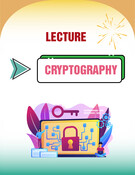
HPU2. Nat. Sci. Tech. Vol 04, issue 01 (2025), 84-94.
HPU2 Journal of Sciences:
Natural Sciences and Technology
Journal homepage: https://sj.hpu2.edu.vn
Article type: Research article
Received date: 09-01-2025; Revised date: 03-3-2025; Accepted date: 27-3-2025
This is licensed under the CC BY-NC 4.0
84
Blockchain with IoT to enhance security, data integrity, and
automation
Thi-Nhung Nguyen
*
Thai Nguyen University of Information and Communication Technology, Thai Nguyen, Vietnam
Abstract
The integration of Blockchain technology with the Internet of Things (IoT) presents a transformative
approach to addressing critical challenges in security, data integrity, and automation. This paper explores
the synergies between these technologies, proposing a framework that leverages the decentralized and
immutable nature of Blockchain to enhance IoT ecosystems. By eliminating single points of failure,
Blockchain ensures robust security for IoT devices and networks. Furthermore, its transparent and
tamper-resistant data structure guarantees the integrity of data exchanged across IoT systems. The study
also examines how smart contracts can automate processes within IoT environments, enabling real-time
decision-making and reducing human intervention. Practical use cases, such as secure supply chain
management, automated healthcare systems, and industrial IoT applications, are discussed to illustrate
the effectiveness of the proposed framework. The results demonstrate significant improvements in
system resilience, trustworthiness, and operational efficiency, highlighting the potential of Blockchain-
enabled IoT to revolutionize diverse industries.
Keywords: Blockchain, IOT, system, industrial, technology, security
1. Introduction
1.1. Background on Blockchain Technology
Blockchain technology, originally conceptualized in 2008 by an anonymous person or group of
people under the pseudonym Satoshi Nakamoto, was first implemented in 2009 as the foundational
technology behind Bitcoin, the first cryptocurrency. The core idea of blockchain is a decentralized and
distributed digital ledger that records transactions across multiple computers in such a way that the
recorded transactions cannot be altered retroactively [1], [2].
*
Corresponding author, E-mail: ntnhung@ictu.edu.vn
https://doi.org/10.56764/hpu2.jos.2024.4.1.84-94






































